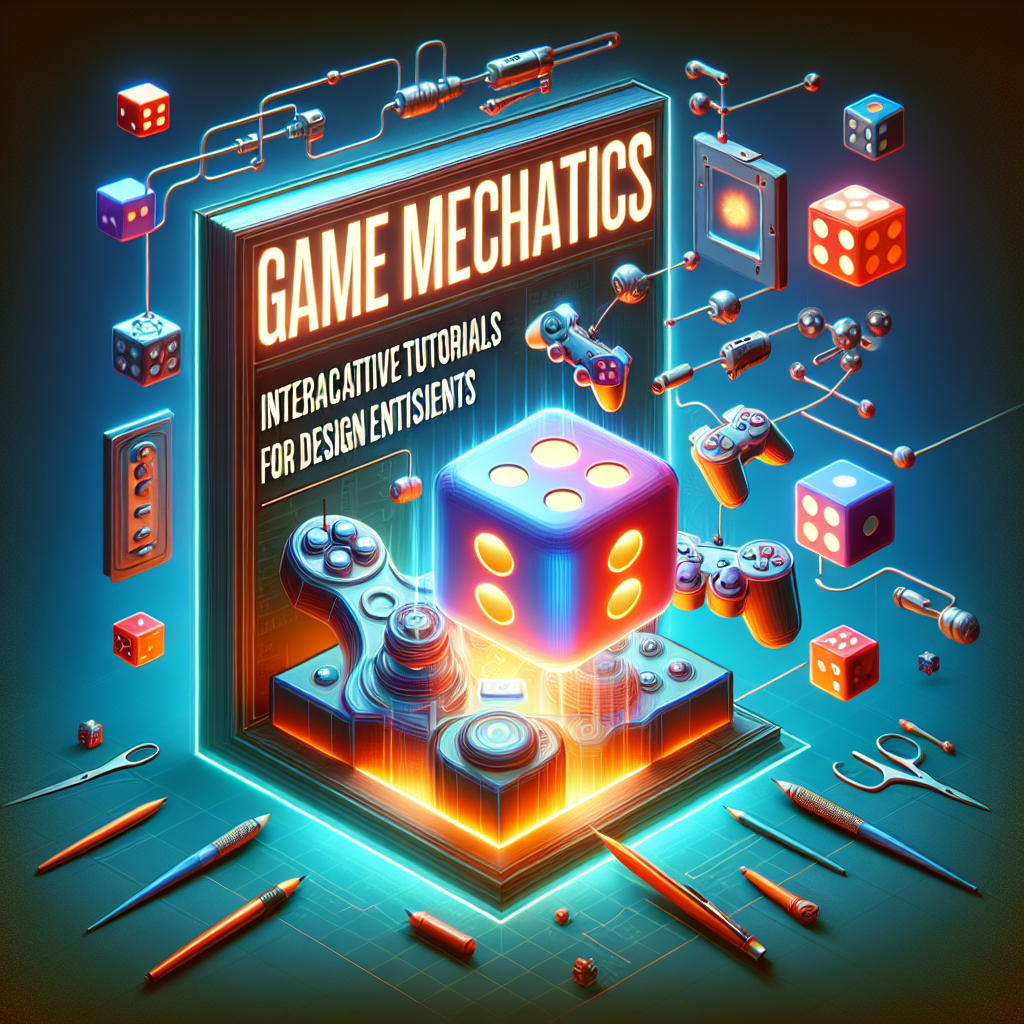Dive into Game Mechanics: Interactive Tutorials for Design Enthusiasts
In recent years, the landscape of game design has evolved into a complex, multifaceted field where aspiring game developers and enthusiasts are looking for immersive ways to hone their skills. A significant aspect of this evolution is the emergence of interactive tutorials—tools that not only teach fundamental game mechanics but also engage users in hands-on experiences that foster creativity and innovation. As game design becomes a more accessible field, understanding game mechanics through interactive tutorials offers a pathway to not just learning, but mastering the art of game development.
Understanding Game Mechanics
Game mechanics are the rules and systems that govern gameplay. They comprise everything from player interactions and control schemes to progression and reward systems. Understanding these mechanics is crucial for anyone looking to design a game, as they dictate how players will engage with and experience the game world.
Game mechanics can be categorized into several types, including:
- Core Mechanics: The fundamental actions players can perform (e.g., jumping, shooting, exploring).
- Game Systems: The underlying frameworks that govern gameplay (e.g., physics, AI behavior).
- Feedback Systems: Methods through which players receive information about their performance (e.g., score displays, UI elements).
- Progression Mechanics: How players advance through the game (e.g., leveling up, unlocking new abilities).
The Rise of Interactive Tutorials
Gone are the days of static instruction manuals and boring blocks of text. The gaming community has embraced a new wave of interactive tutorials that combine education with play. These tutorials encourage active learning, allowing users to experiment with game mechanics in real time while providing immediate feedback.
Benefits of Interactive Tutorials
-
Engagement: Interactive tutorials captivate learners by immersing them in the gameplay experience. By participating actively rather than passively consuming information, players are more likely to retain knowledge and skills.
-
Personalization: Many interactive tutorials adapt to the player’s skill level, offering customized challenges and learning paths. This flexibility ensures that both novices and experienced designers can benefit from focused learning experiences.
-
Immediate Feedback: The immediate application of knowledge in a hands-on format allows players to understand mistakes in real time, leading to improved learning outcomes. This instant feedback loop is crucial for skill development.
- Creativity and Experimentation: By allowing players to experiment freely with different mechanics and systems, interactive tutorials foster creativity. Players can try out various design choices and observe their effects, leading to innovative concepts for game development.
Examples of Interactive Tutorials in Game Design
Several platforms and tools have emerged that exemplify the power of interactive tutorials in teaching game mechanics. Here are a few noteworthy examples:
-
Unity Learn: Unity provides a comprehensive learning platform that includes interactive tutorials designed to teach users about game development. From beginner to advanced levels, learners can access rich resources that guide them through building games using Unity’s powerful engine.
-
Construct 3: This browser-based game development platform offers a drag-and-drop interface, allowing users to create games without extensive coding knowledge. Construct 3 features interactive tutorials that walk users through creating their first games step-by-step, reinforcing concepts by letting users learn by doing.
-
Gamedev.tv: As an online education platform, Gamedev.tv offers courses specific to various game engines and design principles. Many of its courses feature interactive components that encourage learners to build projects as they learn, resulting in practical knowledge transfer.
- Scratch: This visual programming language designed for beginners allows users to create interactive stories and games. Scratch’s interface encourages users to learn by playing, with tutorials that guide them through the process of building their own projects.
The Future of Interactive Game Design Tutorials
As technology continues to advance and the gaming industry grows, the demand for effective, engaging learning tools will only increase. The future of interactive learning is bright, with prospects of integrating virtual and augmented reality into effective tutorial experiences, further blurring the lines between education and entertainment.
Moreover, collaborative platforms where learners can share their designs and projects with peers for feedback will become integral in community building and skill enhancement. These environments foster a sense of belonging and encourage collective learning, ultimately leading to the creation of better and more innovative games.
Conclusion
Interactive tutorials are revolutionizing the way aspiring game designers learn about game mechanics. By providing immersive experiences that emphasize engagement, personalization, and creativity, these tutorials offer a robust foundation for understanding the intricacies of game design. As the field continues to evolve, embracing interactive learning tools will be essential for the next generation of game design enthusiasts, ensuring they are well-equipped to create the gaming experiences of tomorrow.
Whether you’re an aspiring game designer or a seasoned developer looking to refine your skills, diving into the world of interactive tutorials offers an exciting and enriching journey through the vibrant mechanics of game design.




